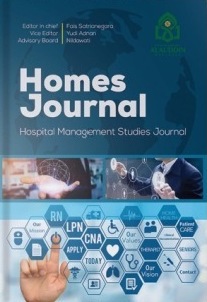ENVIRONMENTAL AND NUTRITIONAL STATUS RELATIONSHIP TO STUNTING EVENTS IN SCHOOL AGE AT SDN 186 LEMAHABANG DESA PATOLOAN KECAMATAN BONE-BONE KAB. LUWU UTARA IN 2019
Abstrak
Background:Primary school age children are children aged 6-12 years. During school age, growth continues even though it is not as fast as the growth that occurred earlier in infancy or later in adolescenceObjective:Stunting is a chronic nutritional problem in children characterized by a shorter height compared to children their age. Children who suffer from stunting will be more susceptible to disease and as adults are at risk for degnerative diseases, the impact of stunting is not only on the health side but also affects the level of intelligence of the child.Method: This research is an analytical study which aims to determine the relationship between nutritional status and environment on the incidence of stunting in school age children at SD 186 Lemahabang, Patoloan Village, Bone-Bone Kab, Luwu Utara in 2019Result:This study shows the nutritional status of the definition of stunting variables, the data obtained are those that are not stunting, 73.33% and those who are stunting 26.2%, The environment of the variable understanding of stunting is obtained by data on students whose respondents are 70% and who are not sufficiently 30%.Conclusion:To produce good performance, the hospital needs to From the results of the data obtained from all of the variables above, it is generally concluded that there is a relationship between the level of nutritional status and the environment on the incidence of stuntingReferensi
Agus R. 2011. Aplikasi Metodologi Penelitian Kesehatan. Penerbit; Nuha Medika. Yogyakarta
Depkes RI. (2013), Riset Kesehata Dasar (RISKESDES) Badan Penelitian Dan Pengembangan Kesehatan, Departemen Kesehatan RI,Jakarta.
Depkes. 2016, Info Datin Situasi Balita, anak Pendek 2016. Tersedia dihttp://www.depkes.go.id/resources/download/pusdatin/infodatin/situasi-balita-pendek 2016. pdf diakses tanggal 13 Agustus 2019
Enny Firia. 2018.Hubungan Tinggi badan ibu dengan kejadian Stunting pada balita usia 24- 59 bulan. Jurnal Keperawatan dan Kebidanan Aisyiyah.Yokyakarta
Gladys Salliony. Hubungan Antara Asupan Energy Dengan Kejadian Stunting Pada Anak Usia 13-36 Bulan Di Wilayah Kerja Puskesmas Tuminting Kota Menado. Diunduh tanggal 13 Agustus 2019
HidayatAlimul, Aziz. (2014), Metode Penelitian Kebidanan Teknil Analisa Data. Selemba Medika, Jakarta.
Kemenkes RI. (2016), Stunting Pengkerdilan, Jakarta, Indonesia.
Khoirun, Ni’mah (2015), faktor Yang Berhubungan Dengan Kejadian Stunting Pada Anak. e-jurnal.unair.ac.id.
Kurniasi, E. (2010), Sehat Dan Bugar Berkat Gizi Seimbang, PT Gramedia. Jakarta.
Kusumawati, E. (2015), Pengendalian Faktor Resiko Stunting Pada Anak Usia Sekolah, Jurnal Kesehatan Masyarakat.
Picauly, I. T & Toy S.M (2013). Analisis determinan dan pengaruh Stunting terhadap Prestasi belajar Anak sekolah di Kupang dan Sumba Timur, NTT. Jurnal Gizi dan Pangan, Maret (2013)
Repository.usu. Tinjauan Anak Sekolah Dasar. Tersedia di http://repository.usu.ac.id/bitstream/handle/123456789/42849/Chapter%20II.pdf;sequence=4 diakses tanggal 13 Agustus 2019
Soekirman. 2000. Ilmu Gizi dan Aplikasi. Departemen Pendidikan Nasional. Jakarta.
UNICEF. Ringkasan Kajian Gizi. Jakarta: Pusat Promosi Kesehatan - Kementerian Kesehatan RI; 2012
WHO (Word Healt Organization). (2010), WHA Global Nutrition Targets 2025


